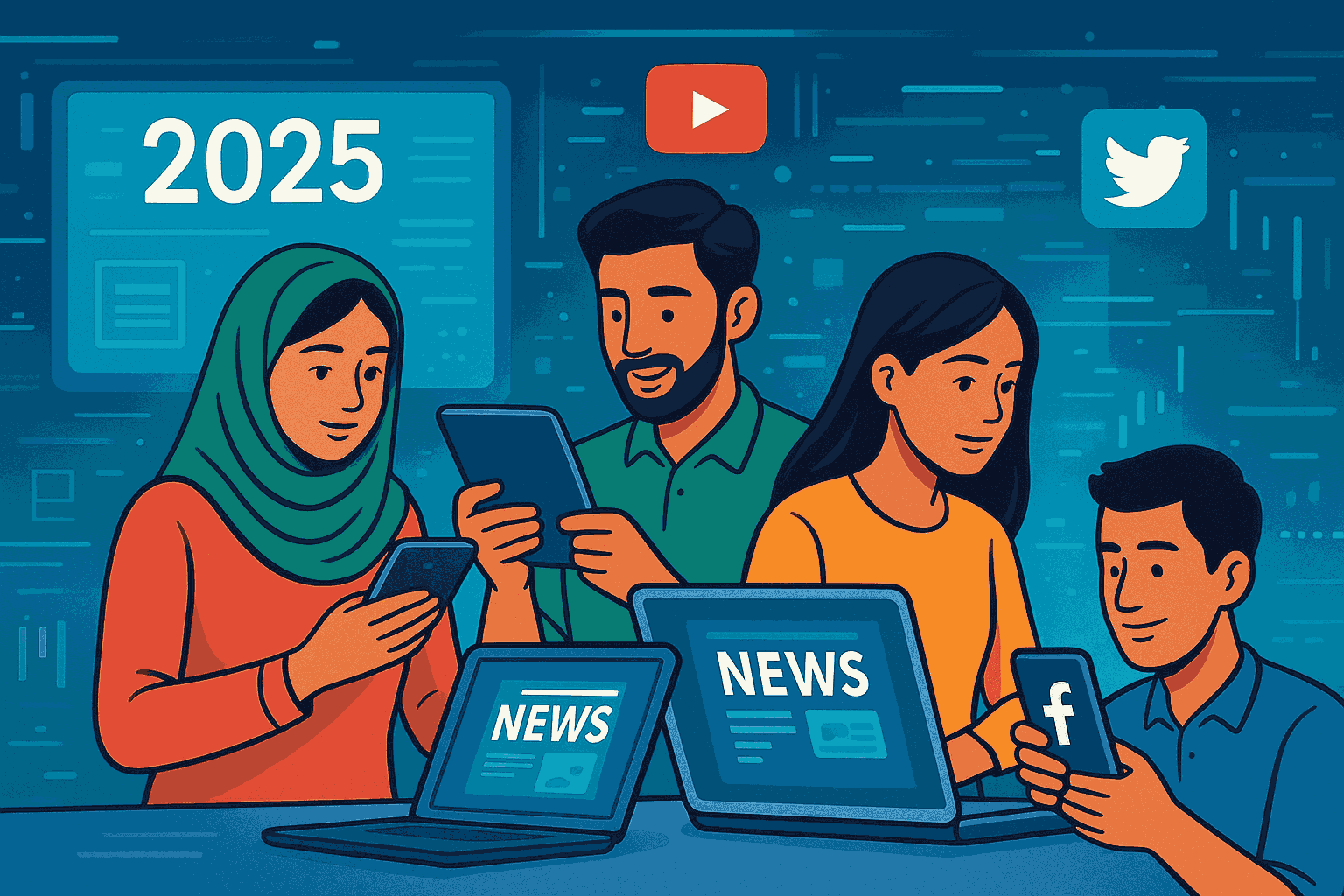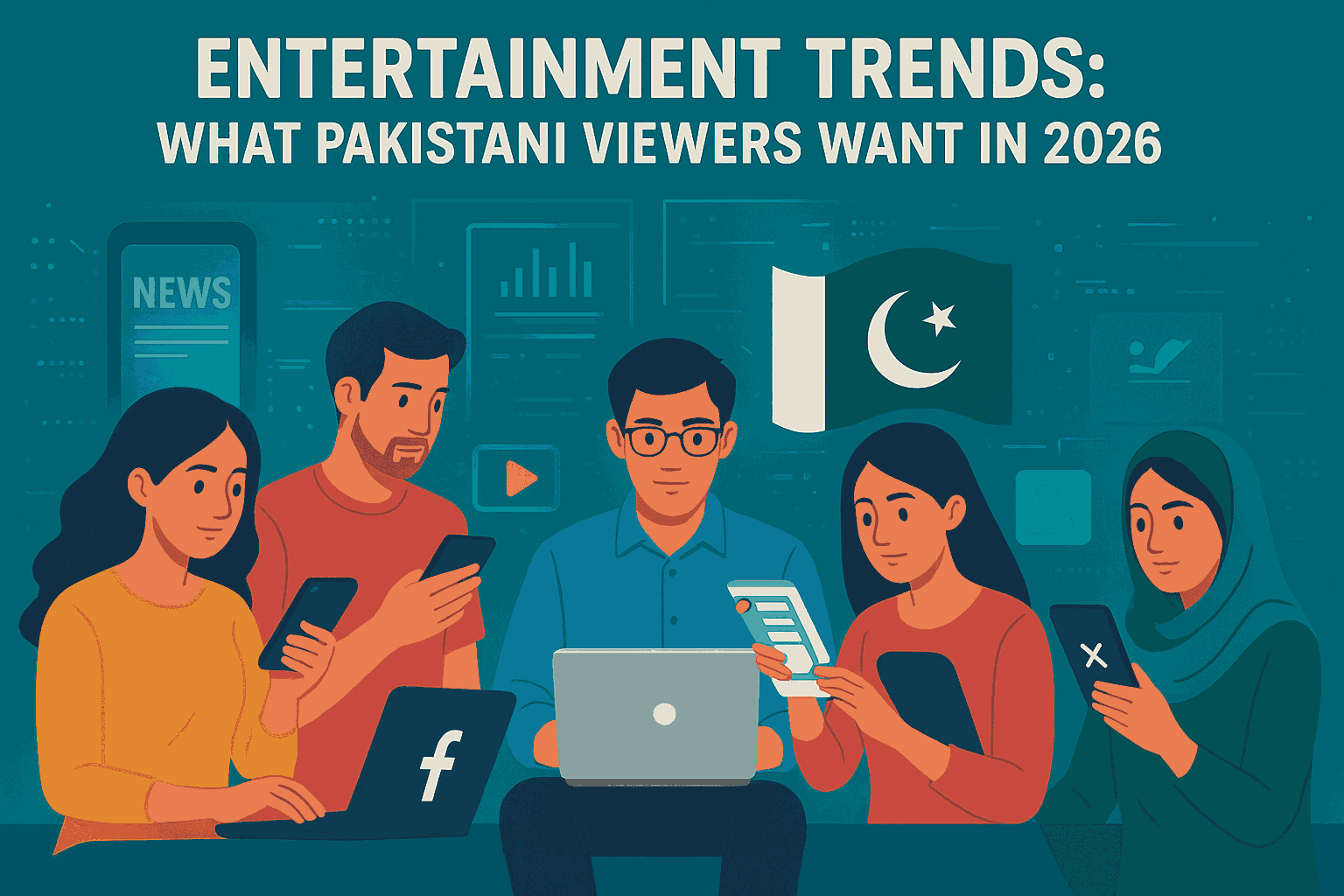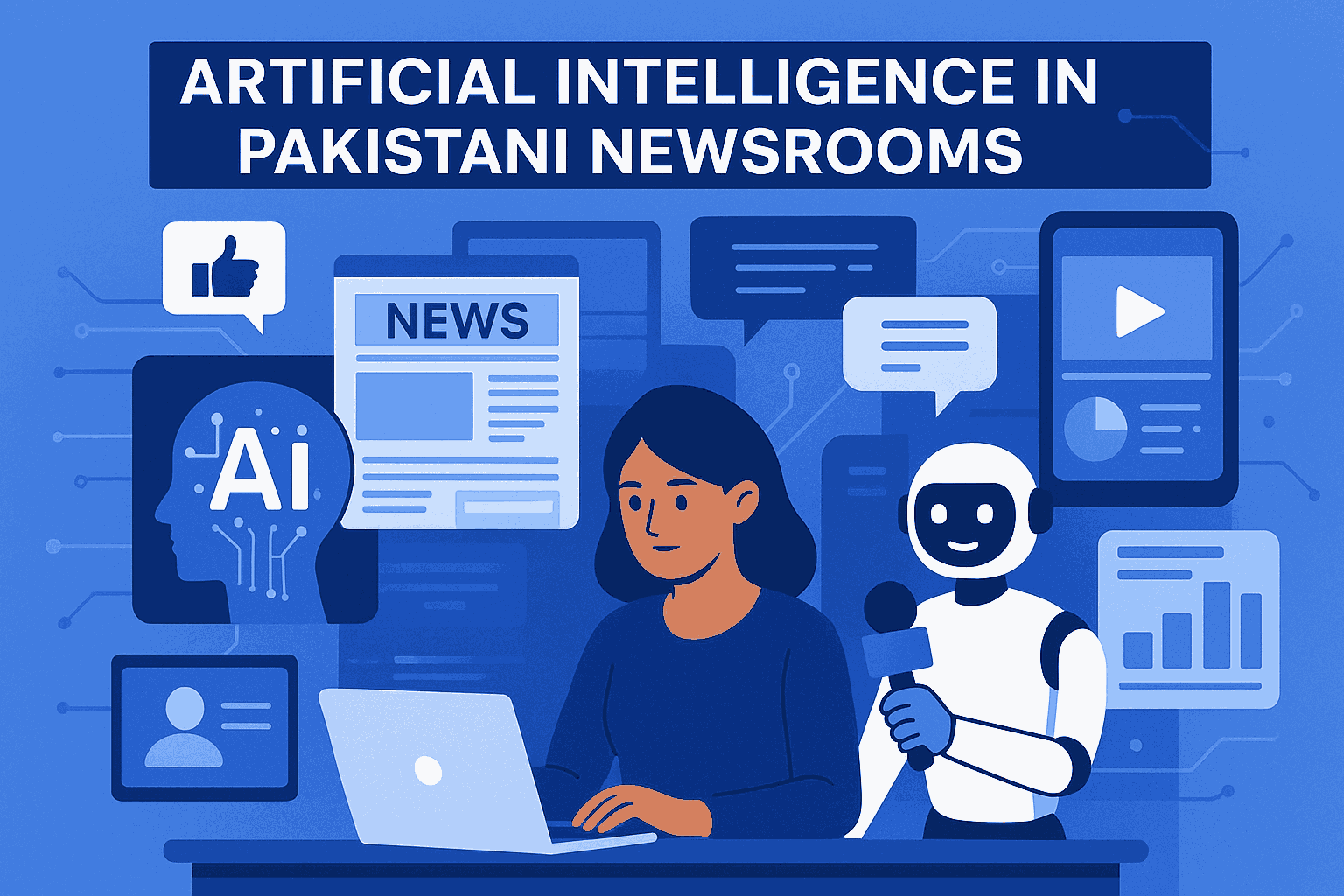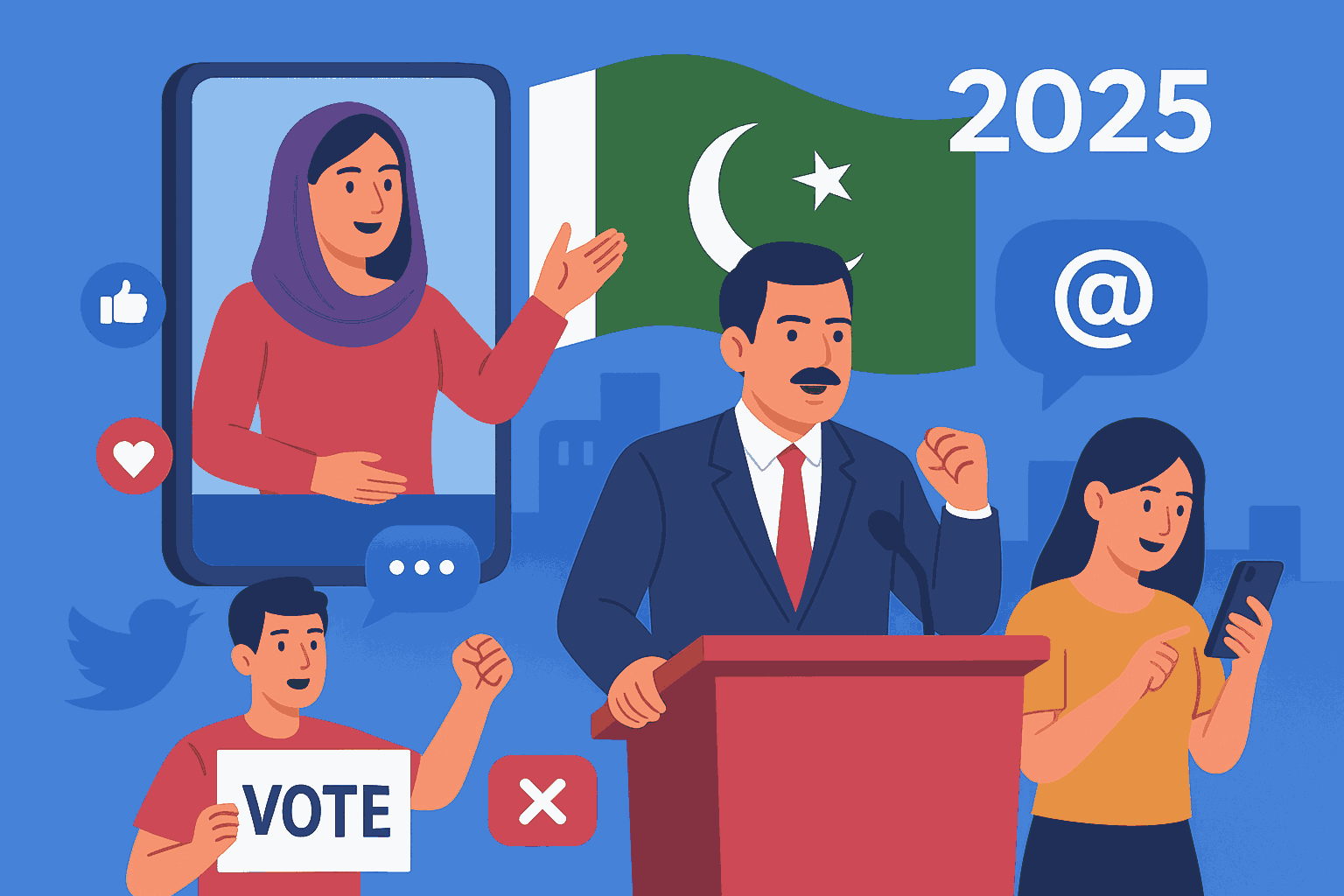The Evolution of Digital News Consumption in Pakistan: How Audiences Are Changing in 2025
By Sana KhalilPublished On 18 Oct 2025

In the digital era, the way people consume news has undergone a remarkable transformation. From the dominance of television and print newspapers to the explosion of mobile news apps, social media feeds, and live streaming, Pakistan’s media audience has evolved faster than ever before.
As 2025 unfolds, digital platforms are redefining not only how people access news but also what kind of content they trust, share, and engage with. This evolution marks a significant shift in journalism, audience behavior, and the overall information ecosystem of Pakistan.
This article explores how digital news consumption has changed in Pakistan, what factors are driving this transformation, and what the future holds for media outlets like 9 News HD in this fast-moving landscape.
The Decline of Traditional News Platforms
A decade ago, television channels and printed newspapers were the undisputed sources of news in Pakistan. Families gathered around TV sets for evening bulletins, and newspapers were delivered to homes every morning.
However, this pattern has drastically changed. The rise of smartphones, affordable internet access, and social media apps has shifted the audience’s attention from traditional formats to digital platforms.
According to recent media reports, more than 87 million Pakistanis are now active internet users, and over 40 million rely primarily on mobile devices for their daily dose of news.
This decline in traditional consumption doesn’t mean TV or print is disappearing completely — but it signals a new reality where digital-first journalism is leading the way.
The Rise of the “Mobile-First” Audience
The majority of Pakistan’s digital audience is now mobile-first — meaning they consume news almost entirely through smartphones. With mobile data becoming cheaper and 4G/5G networks expanding, even audiences in semi-urban and rural areas have joined the digital news revolution.
This shift has changed viewing habits in several ways:
- Shorter attention spans — Users prefer quick updates, videos, and infographics instead of long-form articles.
- Visual storytelling — Platforms like YouTube, TikTok, and Instagram are increasingly popular for news summaries.
- Real-time notifications — Audiences expect instant alerts for breaking news, rather than waiting for scheduled bulletins.
In essence, Pakistani audiences in 2025 want fast, visual, and interactive news — available anywhere, anytime.
Social Media as the Primary News Source
Social media has become Pakistan’s most influential news channel. Platforms like Facebook, X (formerly Twitter), YouTube, and TikTok are not just spaces for entertainment or discussion — they’re where millions of Pakistanis now get their news.
A growing number of people say they trust social media influencers and citizen journalists as much as traditional anchors. This has blurred the lines between professional journalism and public opinion.
For instance:
- Facebook serves as a news aggregator where users share stories and videos.
- X is used for breaking news and political debates.
- YouTube hosts talk shows, documentaries, and live streams from journalists and vloggers.
- TikTok is emerging as a platform for short, catchy political and news content that appeals to younger audiences.
This “social-first” environment has made information more accessible — but it also comes with the challenge of misinformation and fake news, requiring stronger digital literacy among users.
The Role of Streaming and On-Demand Platforms
Another major development in Pakistan’s news consumption habits is the growth of on-demand streaming.
Many TV channels, including 9 News HD, have launched their own digital platforms and YouTube channels where audiences can:
- Watch missed bulletins anytime.
- Access exclusive interviews and documentaries.
- Revisit clips of major events.
Younger audiences, especially those aged 18–35, prefer watching short, high-quality video clips rather than full-length TV programs. This “watch-when-you-want” culture has transformed the concept of news broadcasting into an on-demand experience.
Data-Driven Personalization: The Future of News
In 2025, personalization is key to audience engagement. News platforms are using Artificial Intelligence (AI) and machine learning to analyze user behavior and recommend stories tailored to each reader’s interests.
For example:
- A user who often reads political updates might see more election-related content.
- Someone who follows business news might receive customized economic reports.
- Regional language preferences are being used to deliver local updates in Urdu, Punjabi, Sindhi, or Pashto.
This personalized approach has made news consumption smarter, faster, and more relevant — increasing viewer satisfaction and loyalty.
The Shift from Passive to Interactive Audiences
One of the biggest transformations in Pakistan’s digital news culture is the rise of interactive engagement.
Audiences are no longer passive consumers — they are active participants who:
- Comment, share, and debate news stories.
- Participate in online polls and surveys.
- Join live sessions with journalists on social platforms.
This interaction has created a more democratic and responsive media environment. However, it also means journalists must now engage more directly with their viewers and handle online criticism, discussions, and fact-checking in real time.
The Generational Divide in News Consumption
There’s a clear generational gap in how Pakistanis consume news in 2025:
- Younger audiences (18–35) rely on social media, YouTube, and mobile apps.
- Middle-aged audiences (35–50) prefer a mix of digital and TV news.
- Older audiences (50+) still lean toward television and print, though many are gradually shifting to online platforms through WhatsApp and Facebook.
This divide highlights the need for news organizations to maintain multi-platform strategies — balancing modern digital storytelling with traditional reliability.
Challenges in Pakistan’s Digital News Evolution
While the shift to digital has opened new opportunities, it also comes with challenges:
1. Misinformation and Fake News
The rapid spread of unverified content remains a major problem. False information can trend within minutes, damaging credibility and public trust.
2. Cybersecurity and Data Privacy
With online news platforms collecting user data, concerns about privacy and digital ethics are growing.
3. Monetization Struggles
While digital content reaches millions, converting engagement into revenue remains a challenge for Pakistani media houses. Ad revenue is still largely controlled by global tech giants like Google and Meta.
4. Digital Divide
Urban areas enjoy fast access to online content, but many rural communities still lack reliable internet infrastructure — limiting their exposure to digital news.
How Newsrooms Are Adapting
To keep up with changing trends, Pakistani news organizations are modernizing their operations:
- Investing in AI-powered analytics to track audience behavior.
- Expanding into regional languages to reach diverse demographics.
- Training journalists in digital storytelling, data visualization, and social media ethics.
- Collaborating with influencers and digital creators to attract younger viewers.
Channels like 9 News HD are embracing these technologies to stay relevant, combining credible journalism with modern presentation and accessibility.
The Future of News Consumption in Pakistan
By 2030, Pakistan’s media ecosystem is expected to become fully digital and audience-centric. The next phase of evolution will likely include:
- AI-driven news anchors and automated reporting.
- Augmented Reality (AR) newsrooms offering immersive visual experiences.
- Blockchain-based media systems ensuring transparency and copyright protection.
- Localized news apps catering to regional and linguistic preferences.
Ultimately, the future of Pakistani news lies in innovation, credibility, and audience connection. The outlets that adapt fastest to digital expectations will dominate the information landscape.
Conclusion
The evolution of digital news consumption in Pakistan is not just a technological shift — it’s a cultural transformation. Audiences in 2025 are more mobile, informed, and interactive than ever before. They expect instant, authentic, and personalized content across multiple platforms.
For media organizations like 9 News HD, this era presents both challenges and opportunities. Success will depend on embracing technology, promoting transparency, and building trust in an increasingly digital world.
The future of news in Pakistan is clear — it’s digital, dynamic, and driven by the audience.


